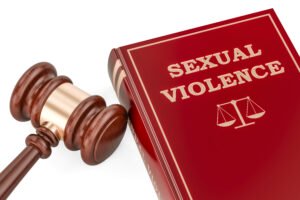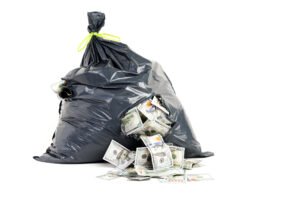If you’re on the job market or have been recently, you might have received a pre-employment assessment test. One posting I found ask applicants to complete a two-parter, with both a “cognitive” and a “personality” element.
That feels strange to me, but perhaps that’s just because I’m not of the same generation as most job seekers these days. Pre-assessment tests like these are generally new, and something that job seekers in the past didn’t have to worry about.
Recently, a few people asked me what I think about them. And, well, I was puzzled!
Is this an “assessment” or a “test”? Could it be possible that you have been born with a wrong personality? Can a simple test produce answers that are even relevant to employment? Most importantly, does the prospective employer have a right to know what it is? Is the term “pre-employment” before even having a screening interview presumptuous? What message do these tests send about the companies that use them? Is it fair to ask job seekers to invest even more uncompensated time?
So, I crowdsourced the answer on LinkedIn: “What do you think about the pre-employment assessment tests?” Here is a result of my completely unscientific, unrepresentative sample:

Some Lawyers Are Open-Minded About The Pre-Employment Assessment Tests
“I don’t know but I voted great idea. First, I love new things. Second, I love personality tests. So, I’m in!” said Lisa Goldkuhl, a dedicated mother and in-house supervising attorney.
Besides being fun, these tests may be useful. “If the cognitive test identified the smartest or most intellectually flexible candidates without regard to how their name sounds or where they went to school that could be a positive. Even on personality, it can be useful if you invest time to find out what types succeed or failed your workplace and why,” said Stuart Altman, senior vice president and global chief compliance officer at Las Vegas Sands Corp.
He explained, “Maybe the environment requires risk-taking. Maybe you are hiring someone to be a strong number 2 and need to know if they can be an advisor and not a leader. We all assume we can hire people and know these answers but usually our decisions are highly biased based on what we think are the needs of the job.”
Are The Pre-Employment Assessment Tests Counterproductive?
Yet, Annie Little, founder of JD Nation, pointed out, “I majored in psychology and found personality psych to be more problematic than useful or predictive of someone’s performance. My thought is that employers are shooting themselves in the foot by repelling people who are turned off by tests/assessments and/or people who would be wonderful additions to their team despite what any assessment results indicate.”
Likewise, Christopher O’Connor, senior content strategist, said, “These personality assessments are inherently a no-win situation. I completed one last year as part of an interview process (I’ve joked with people that’s probably why I didn’t get the gig). It offered 50 or so Myers-Briggs-like questions about work attitudes and reactions and approaches to a certain situation and offered a Likert scale to supply answers.”
He continued, “But see, if someone answers all 5s, you know they’re full of it. If anyone mixes in a few too many 1s, maybe that’s an immediate flag on confidence/competence. But then if you dance with the 3s too much, then it gets subjective — some might see that as honesty and room for growth, while others see it as indecisiveness or red flags, that hey maybe this guy requires too much investment. I think these folks want 4s across the board, which while it isn’t as ridiculous as all 5s, is pretty unlikely. I don’t see how it’s really all that valuable to companies, ultimately.”
Lourdes M. Turrecha, the chief privacy tech evangelist of The Rise of Privacy Tech, and founder and CEO of PIC, said, “They’re very intrusive so I think they should be completely voluntary and not prevent an applicant from getting hired. If hiring decisions are made based on them, they should be transparent what factors are taken into account, and why.”
Is It Possible That Pre-Employment Assessment Tests Perpetuate Biases?
Shari E. Belitz, CEO at Shari Belitz Communications, observed, “From my psych experience I am familiar with various projective testing techniques. My concern is unless these tests are put through scrutiny, they may be riddled with bias.” She added, “Even if the tests themselves are not inherently biased, the scoring is. It is very subjective.”
Should We Be More Open To Diversity?
“I am definitely not a fan. I would be concerned that it would frustrate diversity and inclusion efforts and would result in the hiring of likeminded employees,” said Lisa Lang, general counsel at Kentucky State University, “I would also think you would want a variety of people with different personalities and skillsets to ensure room for innovation.”
Likewise, Ravi Rao, senior associate, solution delivery Fulcrum Global Technologies, said: “You have to accept that people will come to your org with differing sets of personality traits. And those traits are not consistent in personal vs. professional lives. If you want everyone in a role to be the same, then hire robots.”
The Relationship Between The Job Description And The Assessment Is Not Always Apparent
Jamie-Leigh Brandes, legal counsel at CMC Markets, said, “I once wrote a pre-employment assessment that completely threw me off. It was unrelated to the role and I didn’t do well in it. I started doubting my application and whether I wanted to work for the company.”
She continued, “It got me thinking, ‘Well if the test is this difficult, would I be able to do the work?’ The best thing to do, if you do insist on doing these assessments, is to make it relevant to the post. You’ll inspire the person taking the test to do their best at it, and it’ll be a true reflection of what you’re looking for in a candidate.”
Likewise, MacAllistre (Alli) Henry, corporate counsel at Contentful, explained, “I think they are a good idea if used sparingly and to truly test for skills necessary for the job. They’re horrid if they are overly long or an exploitative way for a company to get free work/work product from a candidate.”
So, perhaps like any other element of the job application process, a pre-employment test is only effective, fair, and justified depending on how the employer uses it. It draws out sensitive information, but it’s up to the employer to determine how that information is used. After all, a cover letter and resume provide sensitive information, too, and we have to trust that the employer won’t make a decision based on our gender, last name, or age.
But, given especially the negative responses, the pre-employment assessment can also be a way for a potential employee to evaluate the employer. It’s a way for seekers to learn about the company they are interviewing for. And whether a company uses this type of screening — and what kind they choose to rely on — can reveal much about the company, their values, and their evaluative framework.
 Olga V. Mack is the CEO of Parley Pro, a next-generation contract management company that has pioneered online negotiation technology. Olga embraces legal innovation and had dedicated her career to improving and shaping the future of law. She is convinced that the legal profession will emerge even stronger, more resilient, and more inclusive than before by embracing technology. Olga is also an award-winning general counsel, operations professional, startup advisor, public speaker, adjunct professor, and entrepreneur. She founded the Women Serve on Boards movement that advocates for women to participate on corporate boards of Fortune 500 companies. She authored Get on Board: Earning Your Ticket to a Corporate Board Seat and Fundamentals of Smart Contract Security. You can follow Olga on Twitter @olgavmack.
Olga V. Mack is the CEO of Parley Pro, a next-generation contract management company that has pioneered online negotiation technology. Olga embraces legal innovation and had dedicated her career to improving and shaping the future of law. She is convinced that the legal profession will emerge even stronger, more resilient, and more inclusive than before by embracing technology. Olga is also an award-winning general counsel, operations professional, startup advisor, public speaker, adjunct professor, and entrepreneur. She founded the Women Serve on Boards movement that advocates for women to participate on corporate boards of Fortune 500 companies. She authored Get on Board: Earning Your Ticket to a Corporate Board Seat and Fundamentals of Smart Contract Security. You can follow Olga on Twitter @olgavmack.
 Jordan Rothman is a partner of The Rothman Law Firm, a full-service New York and New Jersey law firm. He is also the founder of Student Debt Diaries, a website discussing how he paid off his student loans. You can reach Jordan through email at jordan@rothmanlawyer.com.
Jordan Rothman is a partner of The Rothman Law Firm, a full-service New York and New Jersey law firm. He is also the founder of Student Debt Diaries, a website discussing how he paid off his student loans. You can reach Jordan through email at jordan@rothmanlawyer.com.





 Olga V. Mack is the CEO of
Olga V. Mack is the CEO of 




 Kathryn Rubino is a Senior Editor at Above the Law, and host of
Kathryn Rubino is a Senior Editor at Above the Law, and host of 




